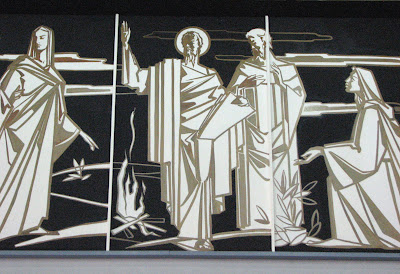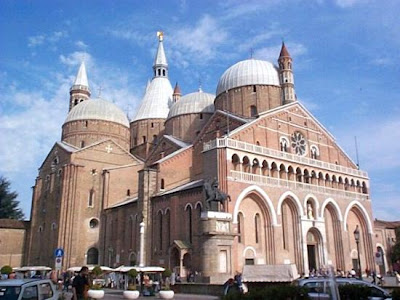 |
| Saint Thomas More |
These two British martyrs are among the most beloved in the English Catholic Church. St Thomas More was born at London in 1478. After a thorough grounding in religion and the classics, he entered Oxford to study law. Upon leaving the university he embarked on a legal career which took him to Parliament. In 1505, he married his beloved Jane Colt who bore him four children, and when she died at a young age, he married a widow, Alice Middleton, to be a mother for his young children. A great reformer, Thomas More numbered Bishops and scholars among his friends, and by 1516 wrote his world-famous book "Utopia". He attracted the attention of Henry VIII who appointed him to a succession of high posts, and finally made him Lord Chancellor in 1529. However, he resigned in 1532, at the height of his career, when Henry persisted in holding his own opinions regarding marriage and the supremacy of the Pope, while strongly opposing Henry's thirst for a divorce. This is when the Church of England broke away from the Catholic religion. The rest of Thomas’ life was spent in writing mostly in defense of the Church. In 1534, with his close friend, St John Fisher, he refused to render allegiance to the King as the Head of the Church of England and was confined to the Tower. Fifteen months later, he was tried and convicted of treason. On the scaffold, he told the crowd of spectators that he was dying as "the King's good servant- but God's first." He was beheaded on July 6, 1535. His life is depicted in the classic movie “A Man for all Seasons,” with Paul Scofield acting in an Oscar-winning performance.
 |
| St Thomas More and St John Fisher before their martyrdom |
St. John Fisher was born at Yorkshire in 1459, and educated at Cambridge. In 1504, he became Bishop of Rochester and Chancellor of Cambridge, in which capacity he also tutored Prince Henry who was to become Henry VIII. St John was dedicated to the welfare of his diocese and his university. From 1527, he actively opposed the King's divorce proceedings against Catherine, his wife in the sight of God. Unlike the other Bishops, St John refused to take the oath of succession, and he was imprisoned in the tower in April 1534. The next year he was made a Cardinal by Pope Paul III and Henry retaliated by having him beheaded within a month. A half hour before his execution, John Fisher opened his New Testament for the last time and his eyes fell on the following words from St. John's Gospel: "Eternal life is this: to know You, the only true God, and Him Whom You have sent, Jesus Christ. I have given You glory on earth by finishing the work You gave me to do. Do You now, Father, give me glory at Your side". Closing the book, he observed: "There is enough learning in that to last me the rest of my life." They were both canonized on May 19th, 1935, with Thomas More becoming the patron of lawyers and politicians.







































